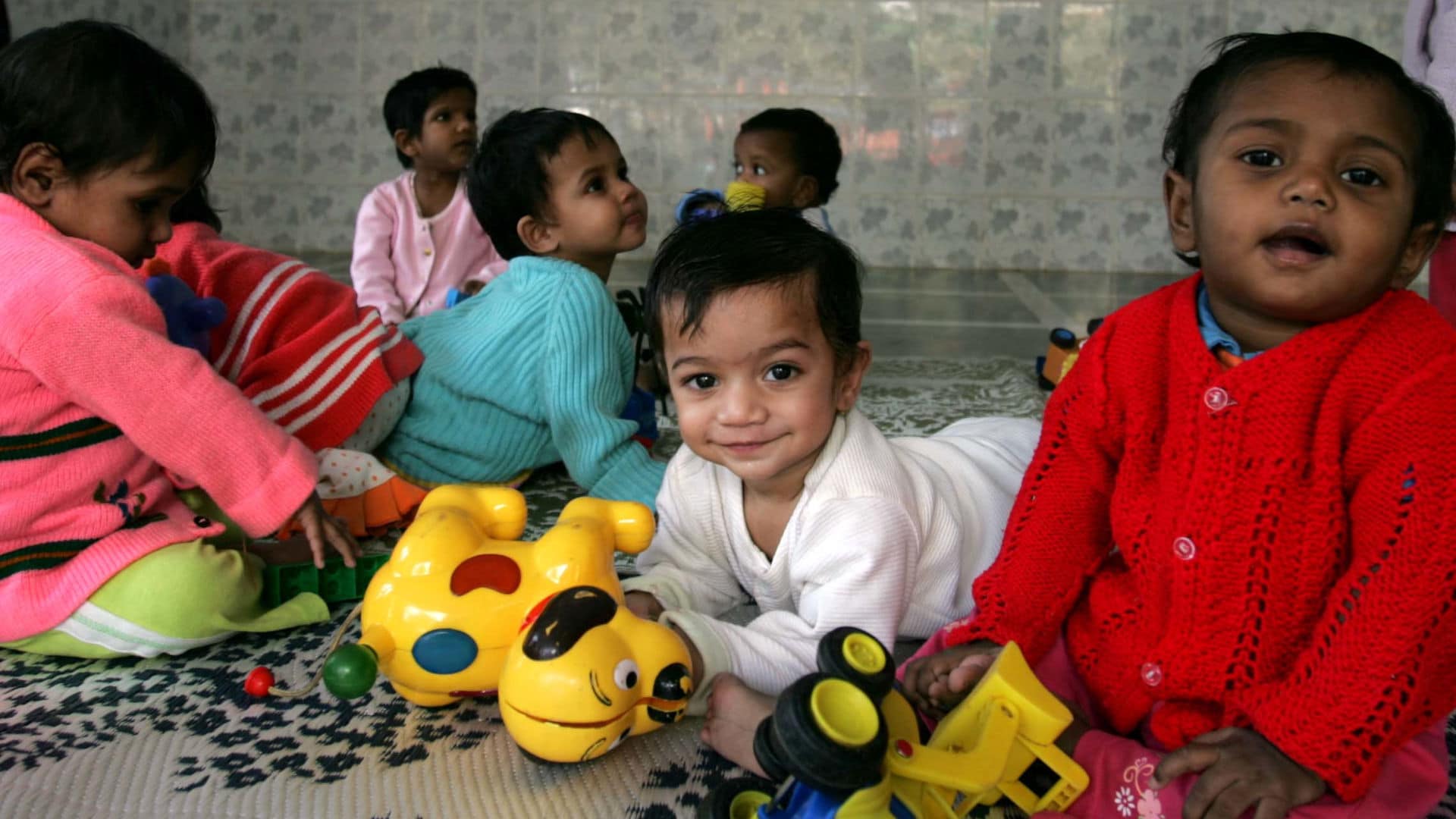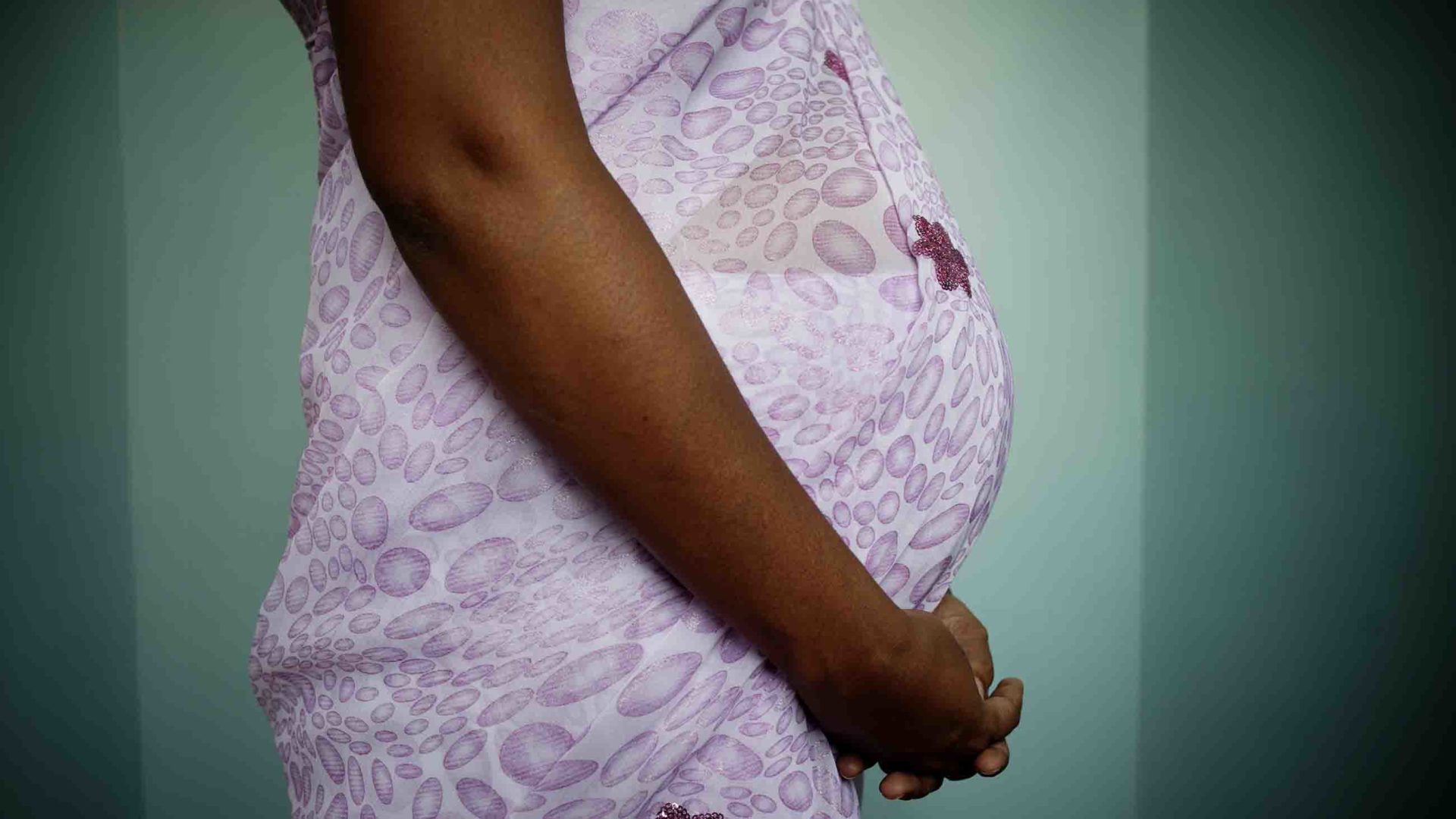Despite Mixed Results, South Asian Adoptees Turn to DNA Tests
Anand Kaper was born in Bombay in October 1976, to an unwed mother in a small private hospital. His birth was never officially registered. When he was nine months old, a Dutch couple adopted him from an orphanage, making Kaper one of about 1,100 children adopted from abroad to the Netherlands that year.
Kaper, now an elementary school teacher, had a happy childhood in the small Dutch city of Apeldoorn, but as he grew older, he began to have more questions about his roots. Since 2002, he has returned nearly every year to the city of his birth — now called Mumbai — to search for details of his adoption. But the orphanage has given him nothing. Officials there told Kaper that mothers who chose anonymity at the time of relinquishing their children couldn’t be revealed, and have denied his requests.
When his daughter was born in 2010, Kaper’s desire to find his biological mother intensified. He went to Delhi in 2012 to ask the Central Adoption Resource Authority, the government body that oversees adoptions, to grant him access to his papers, including documents related to his mother’s identity. They too refused. “India is one of the toughest places to search,” he said. “It has cost me a lot of time, energy, and money.”
In October 2017, Kaper ordered a home DNA testing kit from FamilyTreeDNA, a Texas-based company popular among amateur genealogists. He had few expectations: Testing companies have a negligible presence in India and other countries in South Asia, and their datasets have, in the past, offered little information to people with roots in the region.
Still, for many South Asian adoptees like Kaper, more conventional searches for their roots quickly run into bureaucratic obstacles. As a result, more and more South Asian adoptees are turning to genetic tests, hoping that as genetic databases expand to include more people like them in terms of race and ethnicity, they might yield answers, if not now, then years in the future. These genetic searches, though, bring their own set of challenges, including ethical questions about finding mothers who may not wish to be discovered, and genetic databases that, critics say, have long had a Eurocentric skew.
Kaper knew that the odds were low that a man born in India and raised in the Netherlands could find his genetic relatives in an American data bank. Still, he swabbed the inside of his mouth and sent the kit off.
Home genetics companies have flourished for more than a decade in the U.S. Through January 2019, according to an estimate by MIT Technology Review, more than 26 million people had taken at-home ancestry tests. Using saliva samples, companies like 23andMe claim to offer customers a breakdown of their ethnic origins and the possibility of learning of potential health risks. Customers can also use the tools to find genetic relatives who have opted to be included in a DNA database.
As DNA tests became cheaper, more people took them, prompting paternity surprises and adoption revelations. As some critics began to point out, though, genetic research has historically undersampled African, Asian, and Latino populations — and those dynamics were soon repeated in commercial databanks.
“Some of the reason for this Eurocentricity is historic, having to do with who was studied during the early days of genetic research,” Libby Copeland, a journalist and author of the new book “The Lost Family: How DNA Testing Is Upending Who We Are,” wrote in an email to Undark. But, she added, it seems the “practice has persisted in the consumer genomics space in part because the majority of people seeking these tests are of European ancestry.”
As a result, while someone with European ancestry who takes a test may get granular results telling them their county of origin, someone with roots in South Asia may have to do with a self-evident regional picture. The results for South Asians have “been pretty boring,” said Linda Avey, a 23andMe co-founder and now CEO of Precise.ly, a new genetics company focused on collecting and analyzing genetic data from populations beyond the western world. “It’s, like, ‘You’re 100 percent Indian.’ It hasn’t really given them any depth of information beyond that.”
Experts say it’s a circular problem. “There has to be a certain participation level before that data would be useful,” said Sara Katsanis, a researcher at Northwestern University who studies genetic testing. But, she added, “it’s hard for people to want to be those guinea pigs if there’s no personal utility for them, and they’re paying for it.”
Low participation of South Asians also persists because tests are not easily available in India. Among the four biggest testing companies, 23andMe and Ancestry don’t ship to India at all, and Amazon India lists both FamilyTreeDNA and MyHeritage kits as “currently unavailable.” A FamilyTreeDNA spokesperson said the company has shipped just 867 Family Finder kits to India, a country of 1.3 billion people.
Regulations complicate the process of sending biological material by mail. And there appears to be limited demand.
In India “everyone tends to know who their grandfather is up to the seventh generation or something like that. Until this point, the ancestry market is relatively immature,” said Abdur Rub, CEO of XCode Life Sciences, a Chennai-based genetics company that offered an at-home ancestry test until last year. They plan to relaunch later this year. Much of the initial interest in their kit — which costs 7,000 rupees, or around $95 — was from diaspora Indians.
For South Asian adoptees seeking their biological families, the genetic data gap comes amid many other obstacles. Tens of thousands of babies were adopted from India and Sri Lanka in the 1970s and ’80s to Western countries, some illegally trafficked or stolen from their parents. Today, many adoptees grapple with questions about their identities. In India, their searches are often stymied by missing papers or bureaucratic intransigence. Some adoptees have gone to court, seeking to obtain records.
The searches also raise ethical issues about uncovering the identities of people who wish to remain anonymous. An unsealed record or a DNA test could lead adult adoptees to mothers who were unwed at the time, potentially disrupting their current lives and exposing them to social stigma.
Authorities are often resistant to offering help. Officials want to “play God, and they want the adoptees to accept that,” said Arun Dohle, an Indian adoptee who grew up in Germany and runs a nonprofit that fights child trafficking and offers an adoptee searching service. Dohle thinks some of the obstruction stems from the link between adoption and trafficking in India. “The agencies do not want that to come out,” he said. In addition, agencies “promised the mothers and the families of the mothers secrecy.” If they can’t keep those promises, he said, “the supply of babies will dry up.”
Dohle was only able to access his papers and trace his mother after a seven-year battle that ended with a Supreme Court ruling.
Not everyone has the energy or resources to face those obstacles themselves in a foreign country. A search can cost more than 20,000 euros — a bit more than $23,000. “The only way we see is DNA tests at home,” said Mirjam Bina de Boer-Brinksma, who was adopted to the Netherlands in 1979. She also coaches and counsels adoptees through her company, Bina Coaching. In January 2018, she co-organized a meeting of adoptees in Utrecht on how to search for family and take a test.
Her own FamilyTreeDNA test that year turned up five distant cousins; a subsequent test with 23andme generated another 100-odd. “First I thought, ‘Wow that’s a lot,’” she said. But none were close enough relatives to kickstart a meaningful search.
Managing expectations is key, adoptees say, and like the databases themselves, the searches are a work in progress. “A lot has changed since 2013, and you never know what’s going to happen,” said Rebecca Peacock, a U.S.-based adoptee who first tested in 2013 with 23andMe, and later tried FamilyTreeDNA and Ancestry. “For me it wasn’t helpful as far as immediately, so that was a little disappointing. But I’m hopeful because it only takes one person to come up as a match.”
In December 2017, two months after Kaper mailed his test, he got an email saying his results were in. When he logged on, he found a few fifth cousins, and then someone in the U.S. who was listed as a second cousin, a rare stroke of luck. Kaper messaged him and received a warm reply — and the offer of help.
Meanwhile, his field search continued. On his annual trip to India in 2018, he met a detective who claimed he’d be able to locate his mother within two weeks. Convinced, Kaper hired him, but the detective failed to deliver.
Not long after, commercial genetics companies were slowly expanding their footprint among people with roots in South Asia. In April 2019, 23andMe announced an upgrade to its ancestry estimates. From a single umbrella category of “South Asian,” the test sorted ethnicity into seven bundles, including “Central Asian,” “Gujarati Patel,” and “Kannadiga, Tamil, Telugu, and Sri Lankan.” The categories are still broad; some encompass dozens of distinct ethnic groups and languages.
In an email, a FamilyTreeDNA spokesperson said that by October the company will expand their ethnicity breakdown for South Asian populations from two categories to seven.
The changes have come amid criticisms of the product’s ethnic slant. In June 2020, after racial justice protests across the U.S., 23andMe admitted their product had so far been “Euro-centric,” and promised to diversify their dataset.
The implications go beyond ancestry results: Academic researchers also use data from 23andMe tests, and skewed datasets, researchers say, could limit the applicability of some work. “A more diverse dataset ensures research as a much broader benefit for all populations,” Aushawna Collins, a 23andMe spokesperson, wrote in an email.
Until companies expand their offerings in South Asia, though, testing will be restricted to the diaspora. So adoptees are trying to creatively navigate this terrain themselves.
In 2016, Amanda Janssen, a Dutch adoptee pregnant with her first child, returned to Sri Lanka to search for her birth family. Her own research was derailed by faulty records. But she found that some women in Sri Lanka who had given away children wanted to find them, while Sri Lankan adoptees, now adults, were hunting for their roots. In 2018, through her foundation, Sri Lanka-DNA, Janssen started bringing FamilyTreeDNA kits to Sri Lanka for mothers. In 2020, due to the Covid-19, she started sending them through the mail. In Europe, adoptees used them, too. So far, 297 adoptees and 84 Sri Lankan relatives have so far tested, yielding 21 matches.
The initiative asks those who are doing DNA searches to use FamilyTreeDNA, rather than testing individually with a suspected match. That way, their results show up in the database and add to the pool of potential matches for others. “I try to tell people, ‘Maybe you didn’t find your mother, but maybe you found mine,’” said Janssen.
Adoptees from Colombia have launched a similar effort, and some Indian adoptees have contemplated replicating the model. But for that, families who gave up children would have to come forward. For now, de Boer-Brinksma hopes to encourage more people to test. “By doing this interview, I hope I can inspire Indians to put up their DNA” for testing, she said.
“It would be a lot of help,” she added.
With an eye on the future, Peacock tested her daughter, who was also adopted from India. “I look at it as building a database for the younger generation, and hopefully they, down the road, will have better success in finding their roots,” she said. Since 2013, she is already seeing her own results being updated. “As the testing has got stronger, I’ve got more matches, and more people have entered the database.”
While Peacock and others hope consumer testing grows in India, not everyone is convinced by the luster of the DNA trail, citing privacy concerns about the companies and insisting the focus should be on holding governments accountable. “It is, sorry to use that word, totally fucked up that adoptees have to resort to these commercial DNA databases,” said Dohle. “Because they wouldn’t do it if the authorities in India would cooperate.”
Though Indian regulations state agencies should “facilitate” root searches, in practice this doesn’t pan out. Dohle believes that India should create a centralized database of DNA from families searching for missing relatives or seeking to connect adopted offspring, as South Korea has done.
Dohle did a home DNA test too, but found nothing useful. He describes that route as a lottery. “I’m not saying don’t do it,” he said. “Because if you don’t play the lottery you’re not going to win.”
Adoptee searches, especially through DNA testing, are already throwing up a bramble of ethical concerns. How does one trace one’s roots without upsetting the biological or adoptive family, or violating social norms? If a mother wanted her anonymity protected, shouldn’t that be respected?
Many adoptees are aware of the taboos and sensitivities of navigating these situations. Sonali, for instance, an Indian adoptee in New Zealand, was born to a teenager in 1974. (Sonali requested that Undark only use her first name, because her birth mother still doesn’t know she has identified her.) “I would love to come to India and meet my birth mother,” Sonali said. “But it would be too hard because of the situation. I think I wouldn’t want to upset her family life and unsettle anything that was unknown to her current husband and her family.”
Sonali traced her mother through a maternal second cousin in the U.K. she found on Ancestry.com last year. She learned from him that her mother became pregnant after getting into a relationship with a Bengali man. The relative said that, when the woman’s expectations of marriage were dashed, she placed her daughter for adoption.
When de Boer-Brinksma visited India in 2015, a social worker discreetly shared that she had been found abandoned at a train station when she was around 18 months old. With not even a surname or a birth record on file, her search was hampered from the outset.
Last year she approached the Birbal Sahni Institute of Palaeosciences, a research institute in the north Indian city of Lucknow, to compare her genetic material to their existing population datasets. Niraj Rai, head of the institute’s Ancient DNA Lab, concluded that her ancestors likely came from a 400-mile-long stretch of the Konkan coast, in southwest India. De Boer-Brinksma’s online matches fortified this thesis: The distant cousins she contacted were mostly Mangalorean Catholics, a distinctive community from the coastal state of Karnataka.
“Knowing which community I belong to, that definitely helps,” she said.
“You are taken out of your country, religion, and culture,” de Boer-Brinksma added. Sometimes, she said, “people forget how hard it is to live with not knowing who you are.”
These snippets don’t tell the whole story. But they can be precious, especially given India’s enormous diversity of communities, religions, and languages.
Most adoptees have not found parents, but forged unexpected connections along the way. De Boer-Brinksma has a fulfilling friendship with her newfound cousins, while Peacock has found distant relatives in the Caribbean. “For me it was very nice to know I was connected to other people in this world,” Peacock said. “Before, it was just me.”
In February 2019, a year after Kaper matched with his U.S.-based cousin, the latter visited India and unearthed a Gujarati-language family tree. Having it translated and then consulting a specialist helped Kaper identify someone who was possibly his father.
Last October, Kaper visited Mumbai and contacted the man through his second cousin. He was 10 years older than Kaper, so he couldn’t have been his birth father. But on hearing the story, he agreed to take a test. Kaper carried his sample back to the Netherlands. A few weeks later, the results came back: They shared around one quarter of their DNA. The man is his half-brother, and has three other siblings. He heard that their father had died in 1992. It’s unclear if he even knew of Kaper’s birth.
Kaper hopes to build a relationship with his half-siblings. But, he said, “it’s quite difficult to talk about this issue by phone.” Meanwhile, his search for his mother goes on. He suspects the orphanage holds the “surrender document” she signed while relinquishing him, containing details of her identity.
He believes authorities can at least make good faith attempts to contact mothers to tell them their children are searching and give them the option of meeting them. Research suggests mothers would be more open to this than authorities claim. “A mother will never forget a child, in my opinion,” said Kaper. “Maybe most mothers have changed their mind after 45 or 44 years.”
Bhavya Dore is a Mumbai-based freelance journalist writing for various national and international publications.













Comments are automatically closed one year after article publication. Archived comments are below.
I am African American and our complicated history with science and law enforcement doesn’t encourage participation in a paid product that may not yield meaningful results.
Conversely, I participated in a geneology series at my local library and became aware of GedMatch which aggregates DNA data so users can search and find genetic matches no matter what platform (testing company) they originally tested on. It sounds like an international version of this might be helpful. You download your raw DNA data from Ancestry or 23andMe and upload it to GedMatch which allows it to be matched against all of the other users in their database. There are some advanced functions that are fee-for-service but basic matching is free!
I have found many new relatives, connected relatives unintentionally separated and made new friends during this process. It has been very rewarding overall
Interesting story, highlighting the real problem of undersampling non-euro populations with these DNA tests.
Looking at my mother, and photos of my maternal grandmother, it’s obvious that I have some African. I’d love to know what part of Africa, but I’ll wait to take a test until I know that there’s one that’s sampled at least most of the huge diversity of that continent.